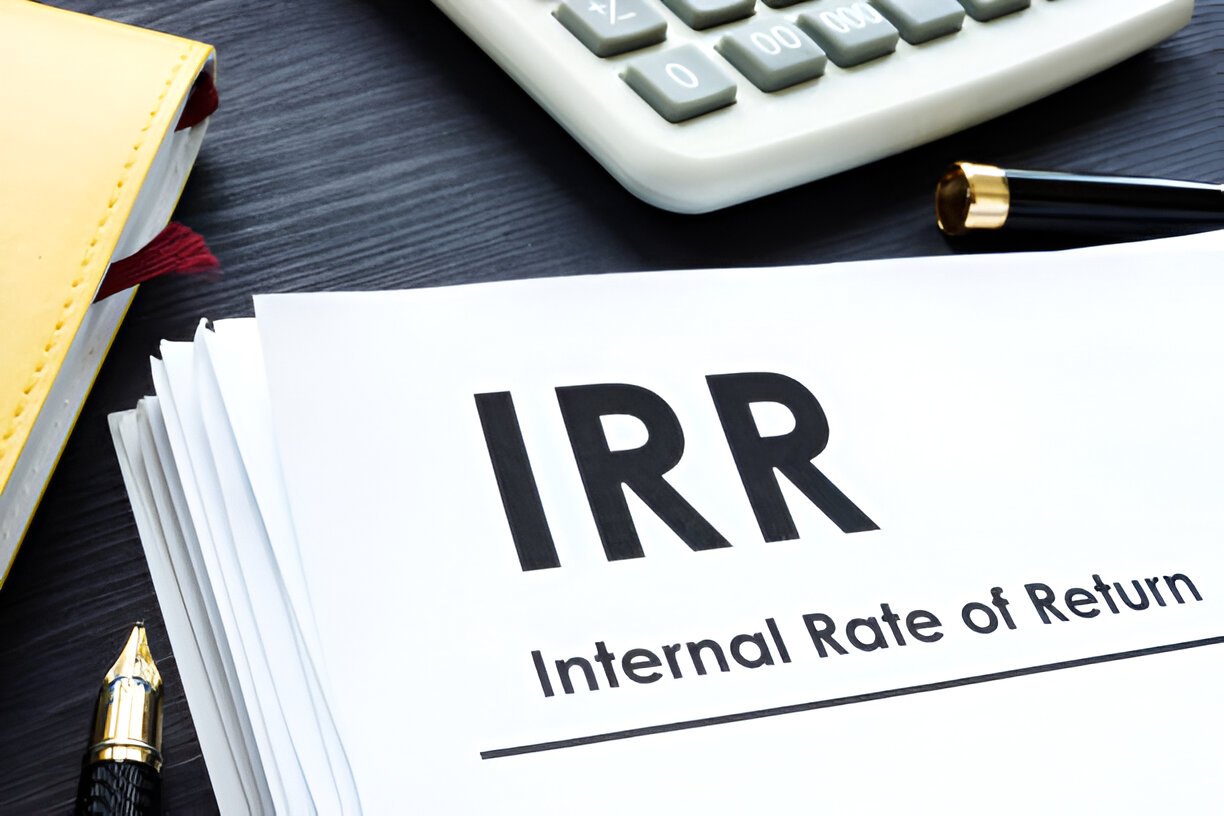When I analyze investment opportunities, one metric I rely on heavily is the Internal Rate of Return (IRR). It helps me compare different projects, assess profitability, and make informed financial decisions. But what exactly is IRR, and why does it matter? In this article, I break down the concept, explore its applications, and highlight its limitations—so you can use it effectively in your financial evaluations.
Table of Contents
What Is the Internal Rate of Return (IRR)?
The IRR is the discount rate that makes the Net Present Value (NPV) of all cash flows from a project equal to zero. In simpler terms, it’s the annualized rate of return an investment is expected to generate. If the IRR exceeds the required rate of return (or hurdle rate), the project is usually deemed worthwhile.
Mathematically, IRR is the solution to the equation:
NPV = \sum_{t=0}^{n} \frac{CF_t}{(1 + IRR)^t} = 0Where:
- CF_t = Cash flow at time t
- n = Total number of periods
Why IRR Matters in Financial Decision Making
IRR provides a single percentage that summarizes an investment’s potential. Unlike simple return metrics, it accounts for the time value of money, making it a robust tool for comparing projects with different cash flow patterns.
For example, suppose I have two investment options:
- Project A: Requires $10,000 upfront and returns $12,000 after one year.
- Project B: Requires $10,000 upfront but returns $6,000 in Year 1 and $7,000 in Year 2.
At first glance, Project A seems better because it returns a total of $2,000 profit, while Project B returns $3,000. But IRR tells a different story.
Calculating IRR for Both Projects
Project A:
0 = -10,000 + \frac{12,000}{(1 + IRR)^1}
Solving for IRR:
Project B:
0 = -10,000 + \frac{6,000}{(1 + IRR)^1} + \frac{7,000}{(1 + IRR)^2}
Solving this (using trial-and-error or financial calculators), we find:
Despite the lower total cash return, Project B has a higher IRR, making it the better choice if my hurdle rate is below 23.4%.
Comparing IRR with Other Investment Metrics
IRR isn’t the only metric I use—NPV, Payback Period, and ROI also play crucial roles. Here’s how they differ:
| Metric | Definition | Strengths | Weaknesses |
|---|---|---|---|
| IRR | The discount rate where NPV = 0 | Accounts for time value of money, easy to compare projects | Can be misleading with non-conventional cash flows |
| NPV | Present value of cash inflows minus outflows | Directly measures value added, works with any cash flow pattern | Requires an assumed discount rate |
| Payback Period | Time to recover initial investment | Simple, intuitive | Ignores time value of money, ignores cash flows beyond payback |
| ROI | (Gain – Cost) / Cost | Straightforward profitability measure | Doesn’t account for time |
When to Use IRR vs. NPV
While IRR is useful, it has limitations—especially with non-conventional cash flows (where inflows and outflows alternate). In such cases, multiple IRRs can exist, making interpretation tricky.
For example, consider a project with these cash flows:
- Year 0: -$5,000
- Year 1: $15,000
- Year 2: -$10,000
The equation becomes:
0 = -5,000 + \frac{15,000}{(1 + IRR)^1} - \frac{10,000}{(1 + IRR)^2}This yields two possible IRRs (~66.7% and ~150%), creating ambiguity. Here, NPV is more reliable because it provides a clear dollar value rather than a rate.
Practical Applications of IRR
Capital Budgeting Decisions
Businesses use IRR to decide whether to invest in new projects, equipment, or expansions. If a company’s cost of capital is 10%, any project with an IRR above 10% adds value.
Private Equity and Venture Capital
Investors in startups and buyouts rely on IRR to compare potential returns across high-risk ventures. A VC firm might target a 30% IRR for early-stage investments to compensate for risk.
Real Estate Investments
IRR helps real estate investors assess rental properties, flips, and development projects. Since real estate often has irregular cash flows (e.g., renovation costs followed by rental income), IRR provides a standardized benchmark.
Limitations of IRR
Despite its usefulness, IRR has drawbacks:
- Reinvestment Rate Assumption – IRR assumes interim cash flows are reinvested at the same rate, which may not be realistic.
- Multiple IRRs – As shown earlier, non-conventional cash flows can produce multiple solutions.
- Scale Ignorance – A small project with a high IRR may contribute less total value than a larger project with a lower IRR.
Modified IRR (MIRR)
To address reinvestment assumptions, I sometimes use Modified IRR (MIRR), which separates financing and reinvestment rates:
MIRR = \left( \frac{FV(\text{Positive Cash Flows at Reinvestment Rate})}{PV(\text{Negative Cash Flows at Finance Rate})} \right)^{\frac{1}{n}} - 1Real-World Example: Evaluating a Business Expansion
Suppose I’m considering expanding my manufacturing facility with the following cash flows:
| Year | Cash Flow |
|---|---|
| 0 | -$500,000 |
| 1 | $150,000 |
| 2 | $200,000 |
| 3 | $250,000 |
| 4 | $300,000 |
Using Excel or a financial calculator, I find:
IRR \approx 18.6\%If my company’s cost of capital is 12%, this expansion is attractive. But if inflation rises and my hurdle rate jumps to 20%, I’d reject the project.
Conclusion
The Internal Rate of Return is a powerful tool, but it’s not flawless. I always pair it with NPV and qualitative factors to make well-rounded decisions. Whether you’re investing in stocks, real estate, or business projects, mastering IRR helps you quantify returns objectively—just remember its assumptions and limitations.





